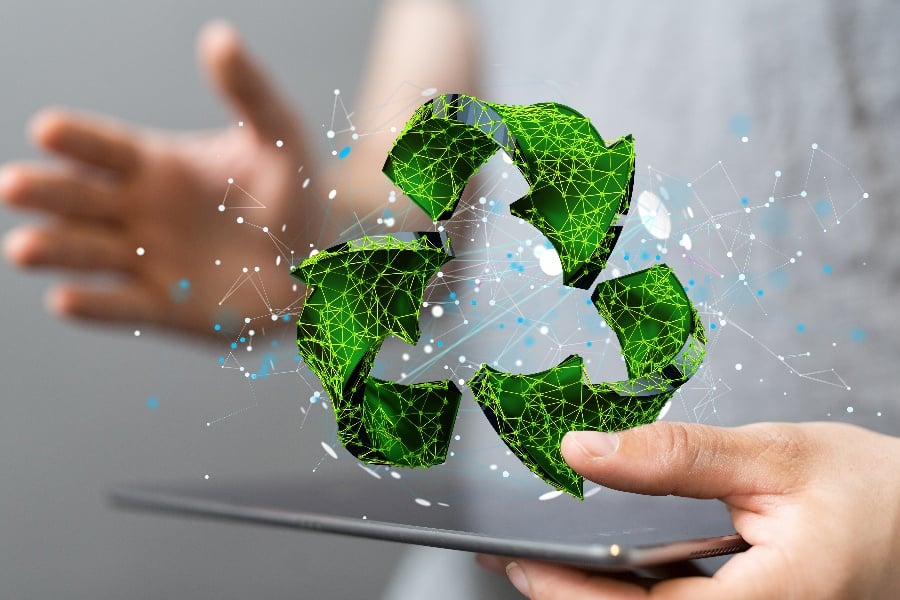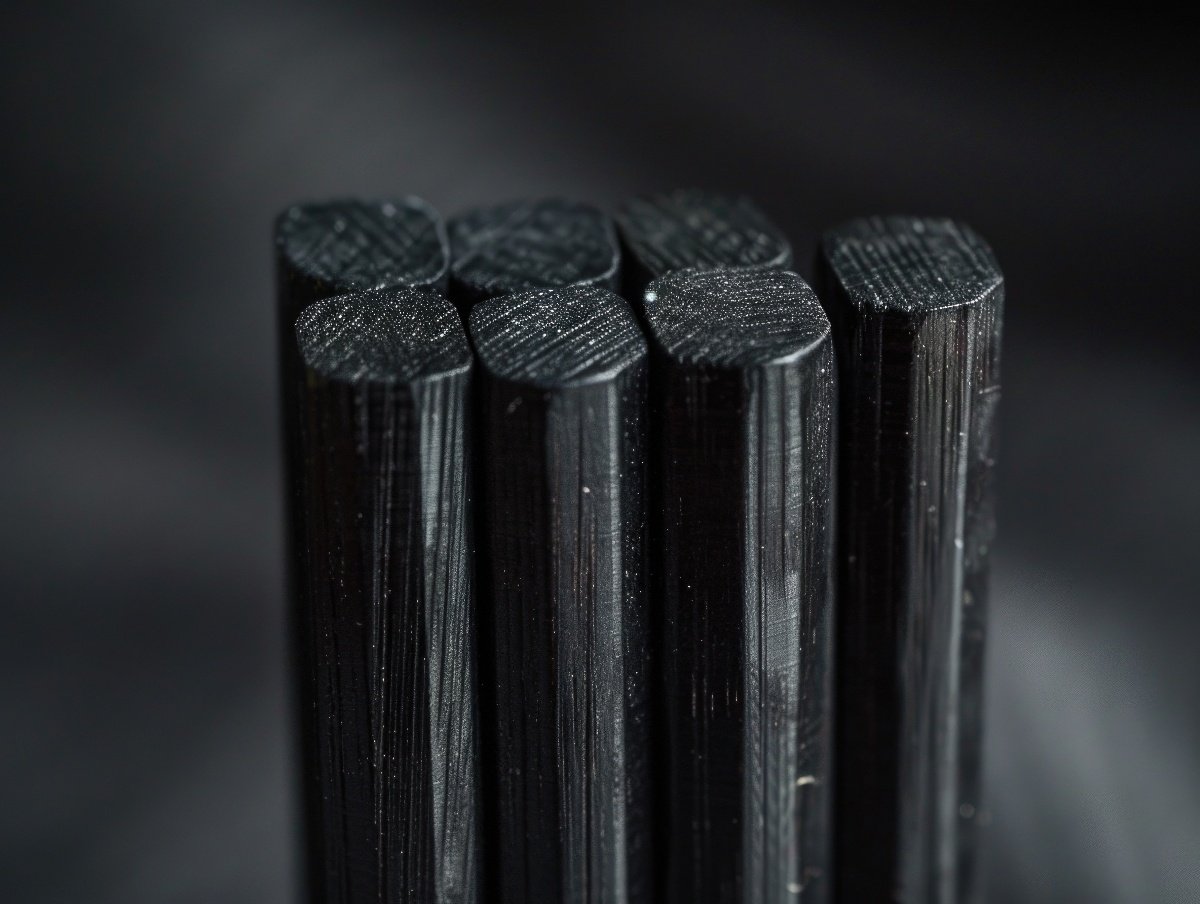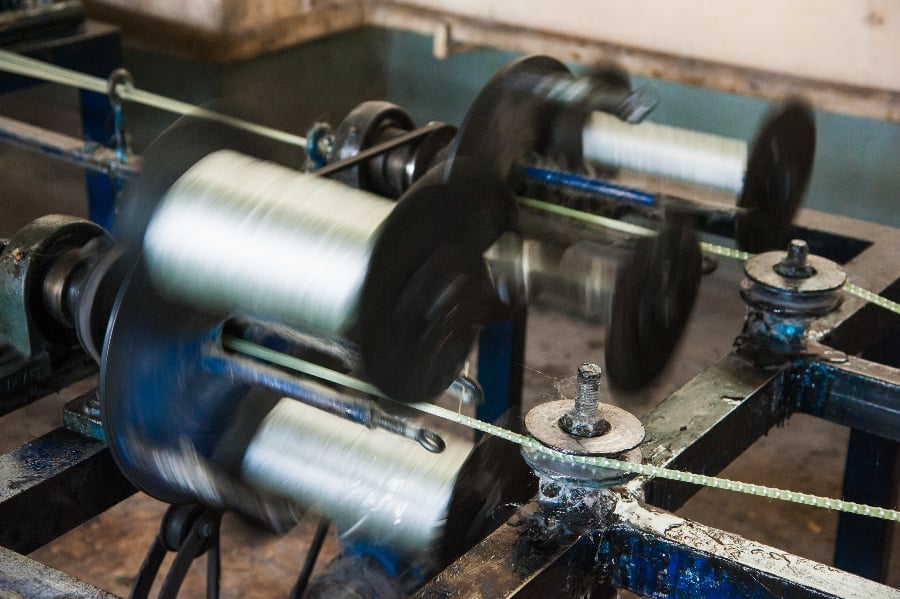-1.jpeg?width=900&name=AdobeStock_398504440%20(1)-1.jpeg)
Recently, we wrote about the problem of plastic waste and the potential impact bioplastic could have. Most of the plastic waste in the world comes from things like bags, food containers, and other kinds of packaging.
Fiber-reinforced plastic (FRP), while a modest portion of the total, nevertheless is part of the challenge we face in dealing with the waste created when our products reach the end of their lifespan.
You’ve probably never seen a “fiberglass” bin at your local recycling center, but methods do exist for turning discarded FRP products into useful materials. In this post, we want to explain some of the methods currently used.
The Main Uses of FRP
Let’s begin by considering where FRP waste comes from. While FRP is used in a wide variety of applications, there are two industries in particular that produce products that use FRP on a grand scale, creating an acute and obvious problem of what to do with these products at end of life.
The first is the wind energy sector. The huge turbine blades that we increasingly see turning on the horizon are made of FRP and have a limited lifespan. The leading edges of the blades are subjected to a surprising amount of wear from dust and other debris in the air since the tips can be traveling at more than 150 miles per hour as they spin. After about twenty years, they must be replaced. The newest blades are about 350 feet in length. That’s one big chunk of fiberglass.
Because of the growing popularity of wind power, it is estimated turbine blades will constitute about 483,000 tons of FRP waste by 2050.
The other significant sector here is aerospace. Aircraft increasingly use FRP for sections of the wings and body. The aircraft industry in North America alone will likely produce around 160,000 tons of FRP that have reached the end of its useful life by 2050.
FRP’s Unique Recycling Challenges
Fiber-reinforced plastic comes in a variety of forms, depending both upon the plastic used and the reinforcing fiber. The most common plastics are epoxy and polyester resin. Most FRP employs glass fiber as the reinforcing material, but a significant portion also uses carbon fiber.
Because FRP is a composite, it presents unique challenges for recycling. When it comes to a material like metal or simple plastic, the material is uniform, and you only have to consider the requirements for that single substance. Steel scrap, for example, can all be thrown into the same pot, melted down, and reused.
FRP is made from two very different materials, chemically bonded together. There is no simple way to separate the reinforcing fibers from the plastic in order to process each separately. Rather, any recycling process has to deal with both together, paying attention to the distinct qualities of each.
Fiberglass Recycling Techniques
So how is this difficult material dealt with at end of life? We can group the techniques employed in recycling into three different categories: mechanical, thermal, and chemical.
Mechanical Fiberglass Recycling
Technologically, this is the simplest approach. It involves mechanically breaking FRP down into small pieces or even a powder, depending upon the application. This usually takes place in several stages, with something like a turbine blade first being sawed into large sections and then smaller ones that are fed into industrial machinery capable of cutting and grinding this incredibly tough material.
The resulting product is used for things like filler in lower-grade composites (think of those plastic planks used for decking or park benches).
The advantages of this approach are that it is simple and utilizes 100% of the waste material. One disadvantage is that the glass fibers are broken down into very short lengths and are no longer suitable for high-strength applications.
Thermal Fiberglass Recycling
This approach uses heat to transform expended fiberglass into usable materials. The most common form is a process called pyrolysis, in which the fiberglass is heated sufficiently to turn the organic compounds in the plastic into gas. This gas is collected and refined to yield both gas and oil. The gas is similar to natural gas and can be used for fuel. The oil is often blended with other types of fuel oil.
When the matrix is burned away in this process, the fibers are left behind. Unfortunately, the heat tends to degrade their quality, significantly reducing their strength. There is research being done on methods to regenerate the resulting glass fibers, but for now, they get used in applications that don’t require as much strength.
Another interesting approach to FRP waste uses it as fuel in the kilns used in the cement-making process. The first step is reducing the product to a pulverized state, as with the mechanical approach. After this ground FRP is appropriately prepared, it is fed as fuel into cement kilns. While the organic part of the FRP present in the matrix burns away as fuel, the minerals that remain from the glass are incorporated into the cement mixture itself.
This results in the complete use of the FRP and is a relatively simple process. Moreover, it does not reduce the quality of the final cement product. Germany has been a pioneer in this mode of FRP recycling. A large cement plant there uses 15,000 tons of composite waste annually, most of this from turbine blades.
Chemical Fiberglass Recycling
This approach involves chemically dissolving the plastic matrix to separate it from the reinforcing fibers. This method is fairly new and isn’t yet used on a commercial scale. The advantage is that it holds the promise of recovering the fibers without significantly degrading their quality. However, it is expensive and uses hazardous chemicals. Future developments may mitigate both of these problems.
The Next Step: Wider Adoption
Though the techniques described above (apart from the last) are already in use, a majority of FRP is still going into landfills at end of life. In many situations, it remains the cheapest option for disposal. In the coming years, though, we expect to see recycling increase as governments tighten regulations and companies become more conscious of the problem of waste and sustainability.
FRP is a useful product that will continue to find new applications. The methods described in this post can help ensure it has a sustainable place in manufacturing for years to come.
_____
Here at Tencom, we’re passionate about the potential for FRP to enhance our lives through stronger, lighter, and more durable products. If you’d like to discuss the advantages of FRP for your next project, get in touch.














